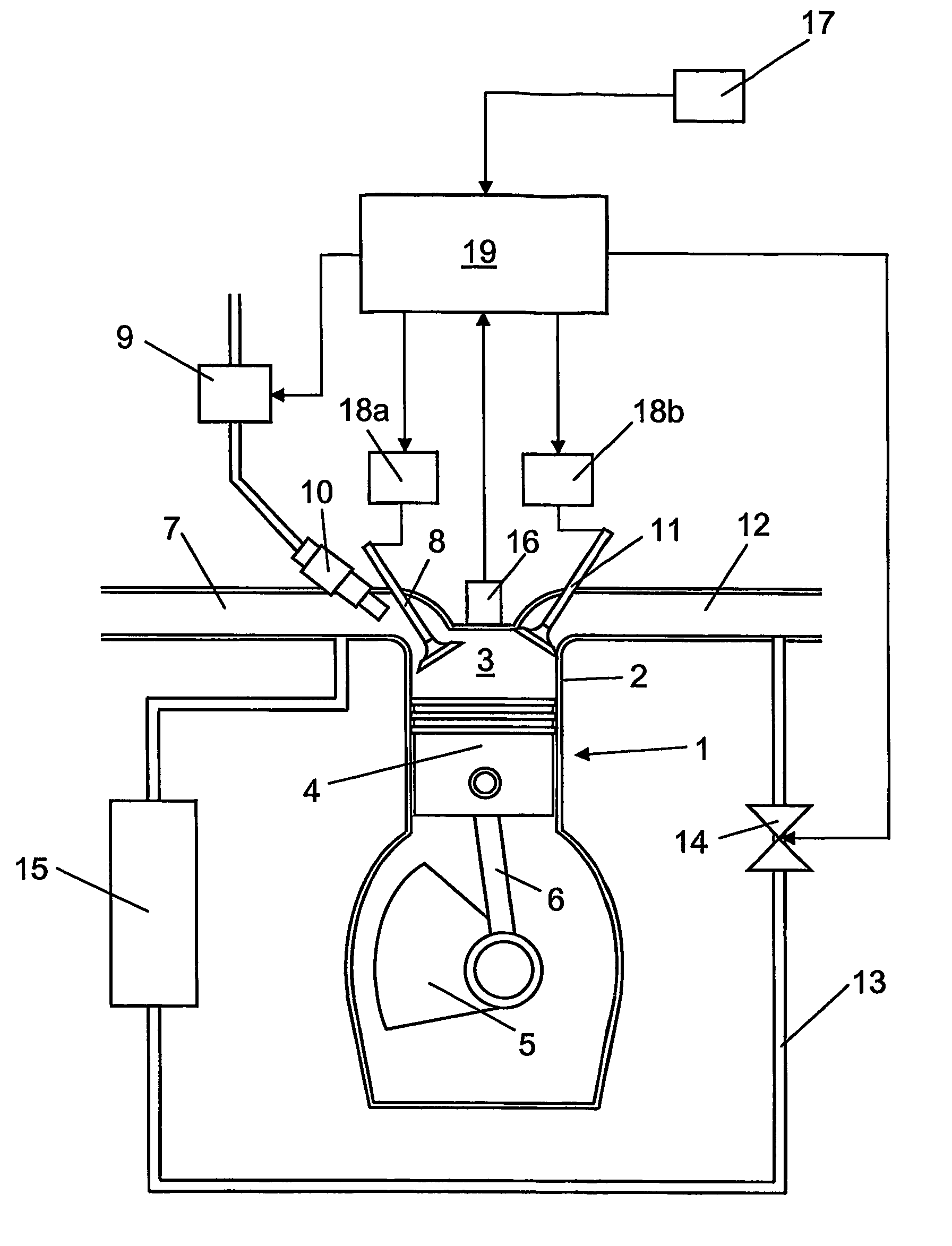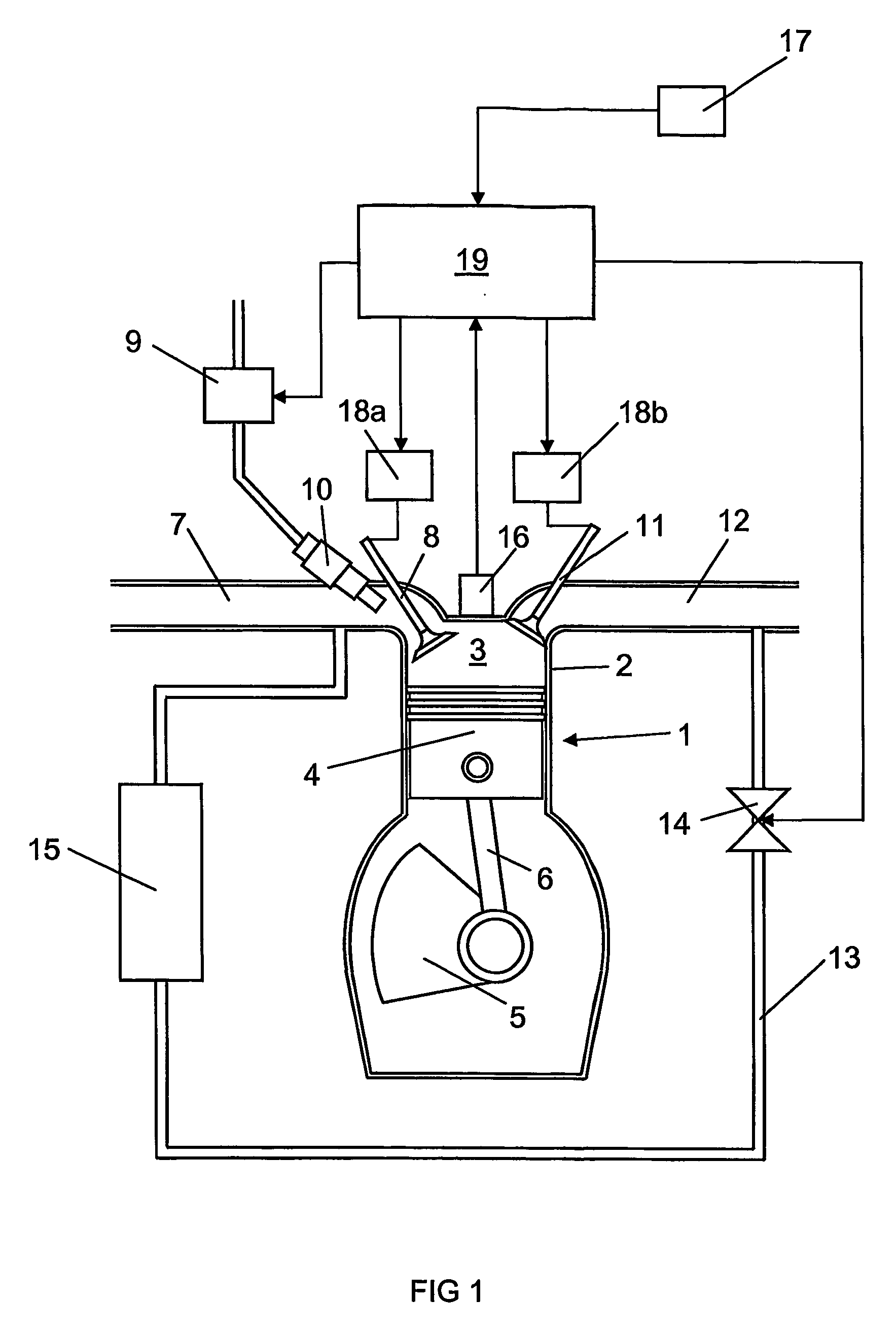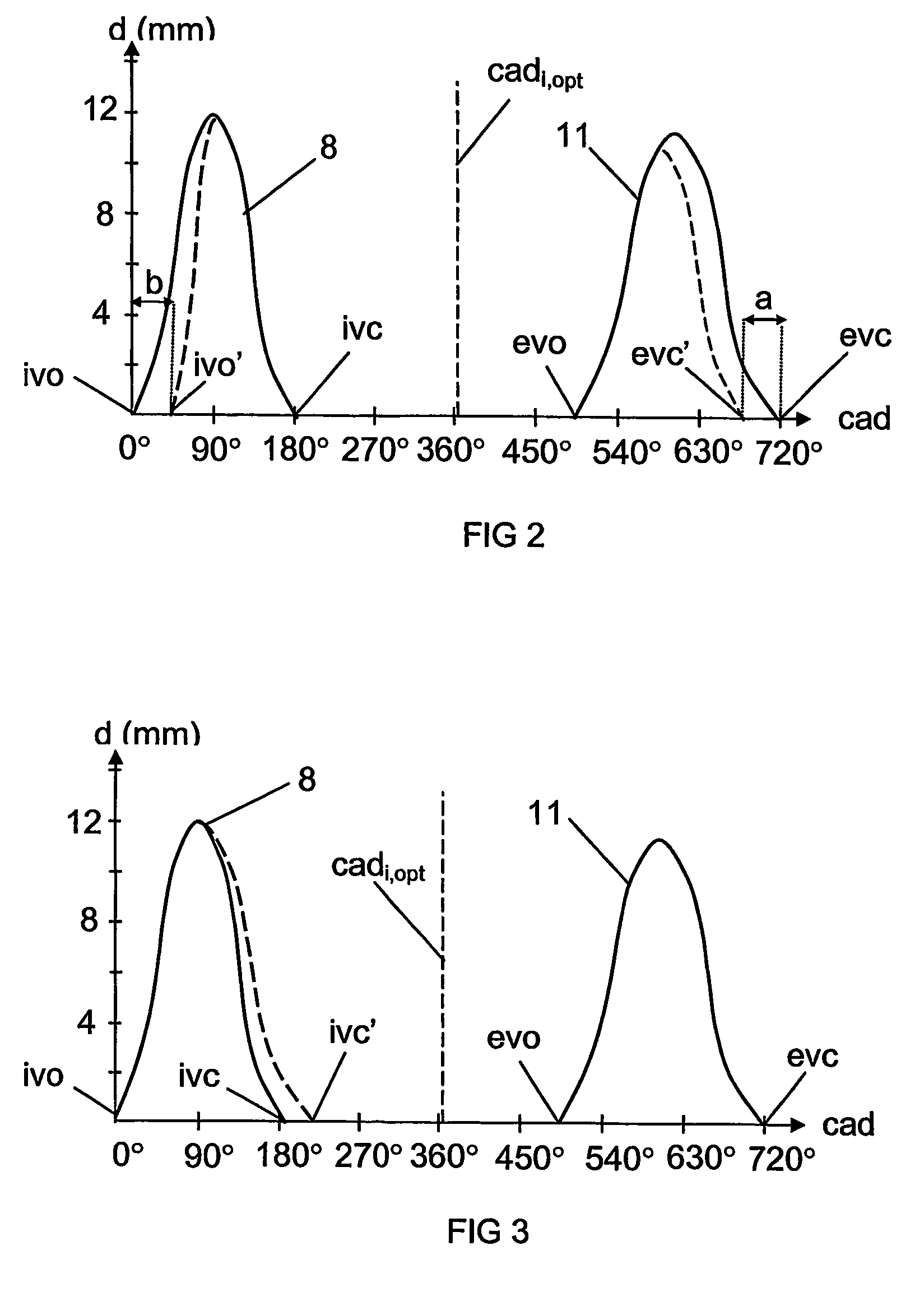Arrangement and method for controlling a combustion engine
a technology of combustion engine and arrangement and control method, which is applied in the direction of electric control, machines/engines, output power, etc., can solve the problems of increasing emissions, reducing the acid content of exhaust gases, and increasing the corresponding pressure, so as to achieve a large load range
- Summary
- Abstract
- Description
- Claims
- Application Information
AI Technical Summary
Benefits of technology
Problems solved by technology
Method used
Image
Examples
Embodiment Construction
[0020]FIG. 1 depicts an arrangement for controlling a combustion engine 1 of the type in which a homogeneous mixture of fuel and air is compressed until self-ignition of the mixture takes place due to the heat arising during the compression. Such an engine 1 is usually called an HCCI (Homogeneous Charge Compression Ignition) engine. An HCCI engine may be regarded as a combination of an Otto engine and a diesel engine. A cylinder 2 of the engine 1 is depicted here. The engine 1 may of course have substantially any desired number of such cylinders 2. The engine 1 comprises a combustion chamber 3 which is bounded downwards in the cylinder 2 by a movable piston 4. The piston 4 is connected to a crankshaft 5 by a connecting rod 6. The movements of the piston 4 in the cylinder 2 are converted to rotary movement of the crankshaft 5.
[0021] When the piston 4 moves downwards in the cylinder 2 and an inlet valve 8 is open, air is drawn into the expanding combustion chamber 3 via an inlet line...
PUM
 Login to View More
Login to View More Abstract
Description
Claims
Application Information
 Login to View More
Login to View More - R&D
- Intellectual Property
- Life Sciences
- Materials
- Tech Scout
- Unparalleled Data Quality
- Higher Quality Content
- 60% Fewer Hallucinations
Browse by: Latest US Patents, China's latest patents, Technical Efficacy Thesaurus, Application Domain, Technology Topic, Popular Technical Reports.
© 2025 PatSnap. All rights reserved.Legal|Privacy policy|Modern Slavery Act Transparency Statement|Sitemap|About US| Contact US: help@patsnap.com



